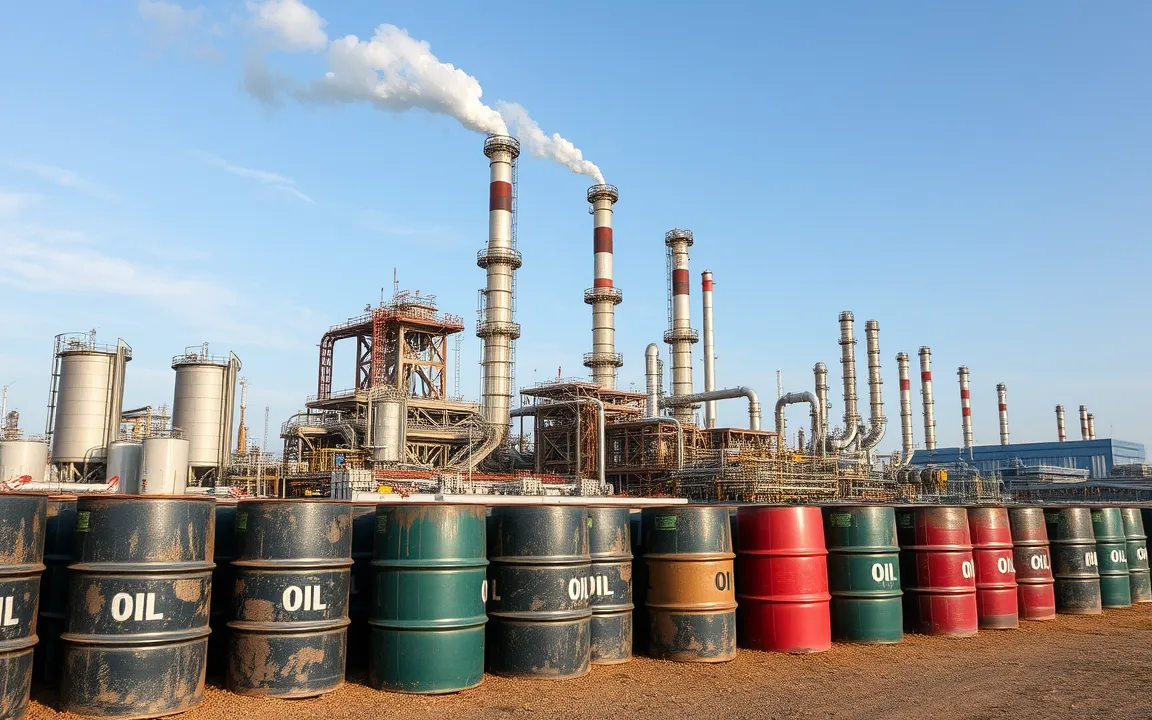
Spare capacity shields Russian oil refineries from Ukraine’s drone offensive
Despite facing Ukraine’s most significant drone attacks so far, Russia’s oil processing has only declined by a mere 3% this year.
Russian refineries have managed to prevent a sharp drop in fuel production by utilising spare capacity to compensate for the damage inflicted by the strikes, Reuters quoted sources and data in a report.
In an effort to undermine Moscow’s primary source of war funding, Ukraine has intensified its drone assaults deep within Russia.
These attacks specifically target oil refineries, depots, and pipelines, seeking to cripple this crucial financial lifeline.
Intensifying attacks
Ukrainian drone attacks on Russia’s oil infrastructure began in early 2025 and intensified again starting in August. These strikes hit a total of at least 17 major refineries.
As a consequence, Russia, the world’s second-largest crude exporter, was forced to limit its fuel exports and implement additional drone defence measures.
The second wave of strikes, occurring between August and October, resulted in a 20% loss of Russia’s refinery capacity.
This loss was due to attacks and planned maintenance, according to Reuters’ calculations, which were based on data from three Russian industry sources.
This reduction amounted to about 300,000 barrels per day (bpd) compared to the previous year, resulting in only a 6% drop in Russia’s total refining volumes, which settled at approximately 5.1 million bpd, according to data and sources.
Overall, oil processing declined by 3% to approximately 220 million metric tons (5.2 million bpd) during the period from January through October, compared to the previous year.
Spare capacity
Even prior to the attacks, Russian refineries were operating significantly below their maximum capacity, according to the report.
This allowed them to lessen the overall impact of the attacks by bringing spare units back online at both the damaged and undamaged facilities, as well as quickly repairing and reactivating the attacked units.
Russia possesses a total refining capacity of approximately 6.6 million barrels per day (bpd); however, industry sources indicate this capacity is seldom completely utilised.
The drone offensive conducted by Kyiv is reportedly aimed at two goals: disrupting the flow of fuel to Russian forces in Ukraine and cutting off Moscow’s oil revenue.
Russian revenue from crude oil and oil products sales reached one of its lowest levels since the war began in 2022, according to the International Energy Agency.
While Ukraine’s President Volodymyr Zelenskyy suggested last month that long-range strikes may have cut Russia’s gasoline supplies by up to a fifth, the Kremlin maintains that the domestic fuel market remains stable.
Russian President Vladimir Putin has asserted that Moscow will not submit to foreign pressure.
Ukraine strikes
Drone attacks have impacted Russian refineries, despite their current ability to cope.
In the first quarter of the year, Ukraine struck six major refineries: Ryazan, Volgograd, Saratov, Tuapse, Ufa, and Astrakhan.
Since the beginning of August, Ukraine has launched at least 58 attacks on key Russian energy sites, with drones traveling up to 2,000 km (1,200 miles) into Russian territory.
The above data was compiled by the UK-based non-profit organisation, Open Source Centre.
Ukrainian drone attacks have targeted several Russian oil refineries, including those in Novokuibyshevsk, Kirishi, and Salavat, since early August, causing damage.
Meanwhile, Western sanctions are complicating Russia’s ability to procure spare parts needed for its refineries, most of which were upgraded with the help of Western companies over the last three decades.
Russian firms claim they have secured alternative sources, such as domestic production or imports from strategic ally China.
The post Spare capacity shields Russian oil refineries from Ukraine’s drone offensive appeared first on Invezz
